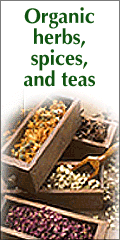|
Vitamin K | Benefits, Overdose, and Deficiency Symptoms
This nutrient enables the body to make special proteins found in blood plasma-the clear fluid in blood. These proteins are responsible for blood clotting. Vitamin K is necessary for healthy bones. It activates many of the proteins needed to form new bone cells. Think of it as the finger that hits the go button and gets those proteins moving and working. A study done on 800 men and women runners supports that those who do not do not get and appropriate amount of vitamin K each day are at the highest risk for bone fractures.
Food High in Vitamin KDark leafy green vegetables like cabbage, kale, spinach, broccoli, and lettuce (but no iceberg lettuce which is mostly water) are the best sources of vitamin k. Cheese, liver, whole grain cereals, fruits, eggs, and fish are other good sources of this nutrient. It is also produced in some amounts in the intestines, by the healthy and friendly bacteria in the intestines. Think of it as an assembly line, some workers are pushing out the waste, some workers are keeping in the nutrients, and other workers (if they are healthy) are busy making and maintaining the good stuff. Vitamin K is good stuff. "If my body produces vitamin K, will I need a supplement?"Vitamins are necessary nutrients that are not produced in sufficient amounts in the body. However, for the average person, most of the vitamin K needed comes from the food we eat so a supplement is not necessary. Some doctors will recommend supplementing to highly active people because activity increases the rick of bone fractures. One way of getting the appropriate amounts of vitamin K through supplementing is by using a vitamin D plus vitamin K mix. Both vitamins are critical to bone health and are often offered together. Vitamin K Overdose and DeficiencyToxicity is quite rare, but deficiency can lead to easy bruising, poor clotting of the blood, and easily broken bones.
|
Search This Site


Must Reads
Getting Answers to Some Health Concerns





